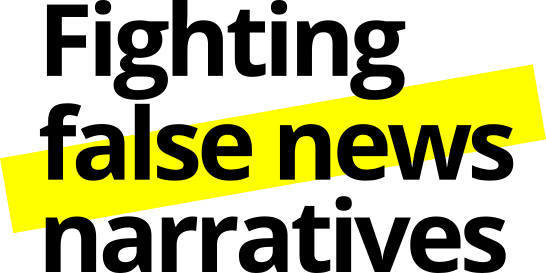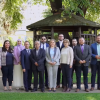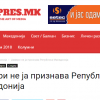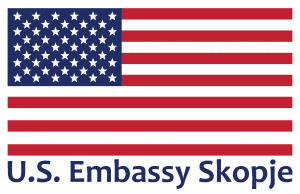“The ultimate goal is to make a mess, to make a mixture of different information, which will confirm the thesis that everyone is the same,” said Goran Mihajlovski, editor of the digital newsroom “Sakam da kazham “.
Lies, manipulations, misinformation are transmitted daily on social media.
Some of them do not cause any harm,
but some can have serious consequences for the credibility of individuals and organizations.
“Through monitoring, we often notice misinformation aimed at discrediting the Agreement with neighboring Greece, that is the Prespa Agreement, as well as the Good Neighbor Agreement with Bulgaria. From other examples, I can point out that we often notice abuse of migrants, we also see misinformation narratives about imaginary enemies, such as Soros, and recently, with the Covid pandemics, he was replaced by Bill Gates,” said Rosana Aleksoska from “F2N2”.
“As it’s been said all the time: “everyone is the same in politics, everyone is the same in entertainment, in all spheres of society”, so to say: “everyone is the same and journalists are the same – both those who are educated and those who are not educated, both those who are professionals and those who are not professionals, and those who are racketeers”, and to end up saying “everyone is the same, all are racketeers, all release fake news” – don’t believe anyone”, according to Mihajlovski.
In the political battle for more votes, some credible media are victims of individual or group attacks on social media in order to present themselves as creators of misinformation.
The editorial office of SDK.MK was the target of creators of misinformation in order to cause confusion and panic in the public.
“The main idea is that if we can cover specific news as much as possible, we should be as visible as possible. Now social networks give you the opportunity to expand your truth versus another truth. Those who respect you and are already loyal readers, who follow you and click to open you, should also spread the information,” said Mihajlovski.
The misinformation is packaged in contents to which the citizens react vigorously.
Safety, health, interethnic relations and politics are the most common topics that are used to “play” with the emotions of the citizens.
There are five disinformation techniques
“Discrediting – if someone does not like criticism, and lack facts and arguments for defense, then critics are attacked with insults and discrediting.
Distorting – this technique is used when someone does not like the facts, so they distort them and the result is a half-truth, which is often more dangerous than a completely fabricated lie.
Defocusing – is used to distract the public from key moments or themes or historical achievements.
Harassment – in the sense that a country implements a certain policy and has chosen a path in the opinion of the majority of citizens. Then it happens that third parties who do not like it publish misinformation that disturbs the public.
The last technique that is particularly important for our multiethnic society is the technique when misinformation is published that creates division or deepening the divisions on political party, ethnic or religious grounds. And very often we see misinformation that aims to create division between us and our neighboring countries,” explains Aleksoska.
The elections are based on the principles of fair conditions for participation of all candidates, trust in the electoral institutions and informed participation of the citizens.
They are often the subject of organized disinformation campaigns
“In general, the purpose of misinformation in the electoral process is to undermine democratic principles by spreading misinformation, which can take various forms, such as distortions of facts, conspiracy theories, completely fabricated information and half-truths – the purpose is to defocus the public, to introduce information chaos, to introduce division and discord, and all that in the end reduces the trust in the processes and in the institutions”, says Aleksoska.
SDK.mk filed criminal charges against an unknown perpetrator
for counterfeiting the logo and spreading false news.
But they also directly fight misinformation
“The main weapon in the fight against fake news is to produce as much truthful news as possible. So, the main weapon against non-professional journalism or propaganda is to produce as much professional journalism as possible, real journalism”, Says Mihajlovski.
Disinformation techniques are evolving and constantly changing
and therefore a comprehensive approach is needed to fight them.
“In order to fight disinformation successfully, regardless if they come from domestic or foreign actors, requires a more comprehensive and coordinated approach. This means involvement of state institutions, the expert public, i.e. the academy, credible media and journalists, as well as civil society” said Aleksoska.
This video was prepared by Vidi Vaka for a project supported by the US Embassy and we are using it upon their approval.










